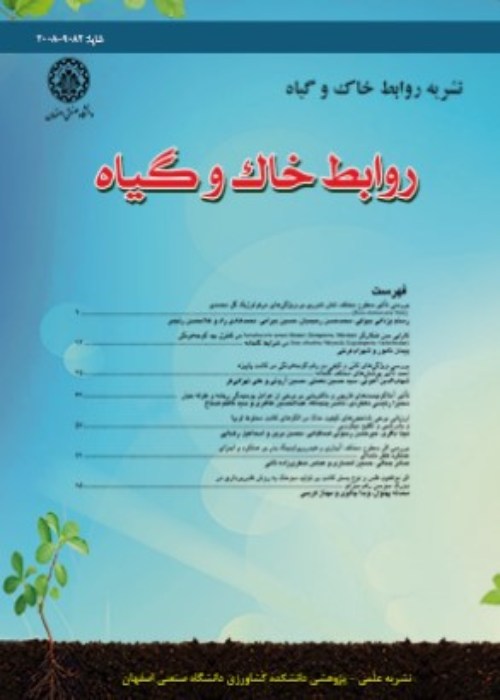Effect of Biofertilizer on Physiological Traits of Black Seed (SN) Ecotypes under Water Stress Conditions
In order to investigate the effect of nitoxin biofertilizer on black seed (SN) under different levels of water stress, an experiment was conducted in the research farm of Ilam University using a split-split plot arrangement based on a randomized complete block design (RCBD) with three replications in 1398-1399. The main plots were water stress treatment at three levels including no stress, moderate and severe stress based on 100, 50 and 35% of plant water requirement. The sub-plots and sub-sub plots were biofertilizer treatments (at two levels) and four black seed ecotypes (Isfahan, Semirom, Mashhad and Neyshabour), respectively. Based on the results, the highest amounts of chlorophyll a, b and total pigments were 0.711, 0.523 and 1.235 mg g-1 FW from control and the highest levels of anthocyanin (14.69 μmol g-1 FW), catalase (0.0152 U min-1 g-1 P or units per minute per gram of protein) and proline (5.84 micromoles per gram of fresh leaves) were obtained in the severe water stress treatment. Results also showed that the highest amount of proline (0.0152 units per minute per gram of protein) and chlorophyll pigments including chlorophyll a, b and total with 0.711, 0.523 and 1.235 mg per gram of fresh leaves, respectively, were obtained in the control. The use of nitroxin biofertilizer increased the levels of anthocyanin and catalase. Among the tested ecotypes, Semirom had the highest amount of chlorophyll b pigment (0.39 mg g-1 of fresh leaves) and the highest amount of catalase activity (0.0087 U min-1 g-1 P). Neyshabour and Isfahan ecotypes had the highest anthocyanin content (9.21 μmol g-1 fresh leaf) with the highest proline concentration (4.4 μmol g-1 fresh leaf) and total chlorophyll a. Based on the analysis of variance of the data, the triple interaction of water stress × nitroxin × ecotype on all measured physiological traits except catalase activity and chlorophyll a pigment was statistically significant at 5% probability level. Decreased chlorophyll indicates susceptibility to drought stress and increased anthocyanin, catalase and proline indicate plant response to stress. Examining the physiological characteristics of black seed under drought stress indicated that black seed is almost sensitive to drought stress. The results showed that there was a difference between black seed ecotypes in terms of response to dehydration and biofertilizer was able to improve the plantchr('39')s response to stress to some extent.
- حق عضویت دریافتی صرف حمایت از نشریات عضو و نگهداری، تکمیل و توسعه مگیران میشود.
- پرداخت حق اشتراک و دانلود مقالات اجازه بازنشر آن در سایر رسانههای چاپی و دیجیتال را به کاربر نمیدهد.



